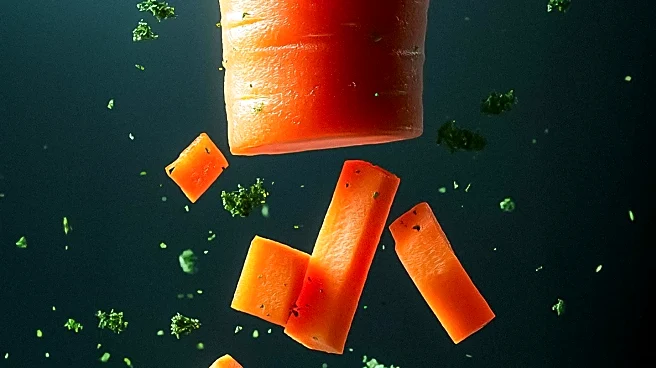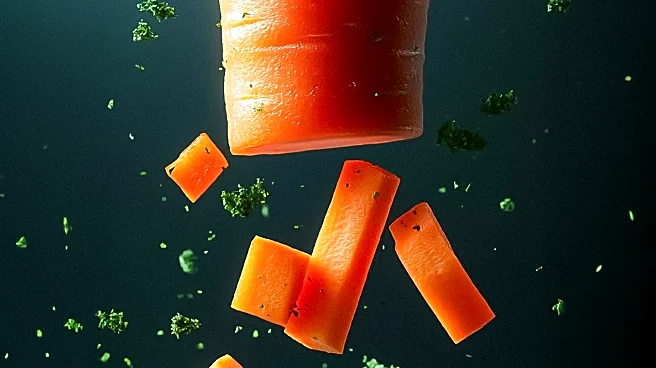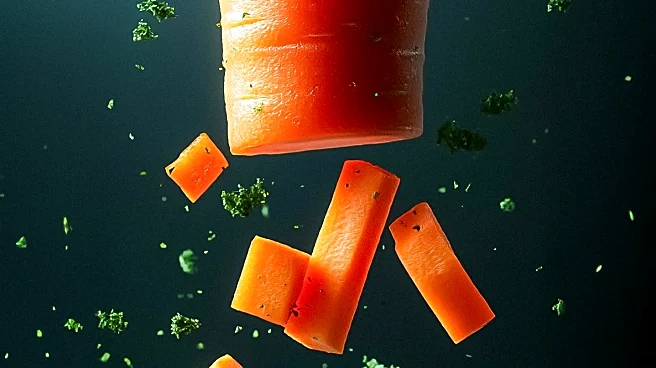What's Happening?
Microplastics are tiny plastic particles, typically less than 5mm in size, resulting from the breakdown of larger plastics or manufactured for specific uses. These particles are often invisible to the naked eye, posing significant health risks due to their ability to penetrate biological barriers. The Environmental Protection Agency (EPA) provides data highlighting the size range of microplastics compared to common particles like grains of sand and human hair. Microplastics can degrade further into nanoplastics, which are smaller than 1 micron and capable of crossing cell membranes, raising concerns about their impact on human health and the environment.
Why It's Important?
The pervasive presence of microplastics in the environment poses a threat to human health, as they can enter the body through ingestion, inhalation, and skin absorption. Exposure to microplastics is linked to inflammation, immune dysfunction, and potential damage to various body systems, including respiratory, gastrointestinal, cardiovascular, neurological, and reproductive systems. Understanding the size and behavior of microplastics is crucial for assessing their health risks and developing strategies to mitigate their impact on the environment and human health.










